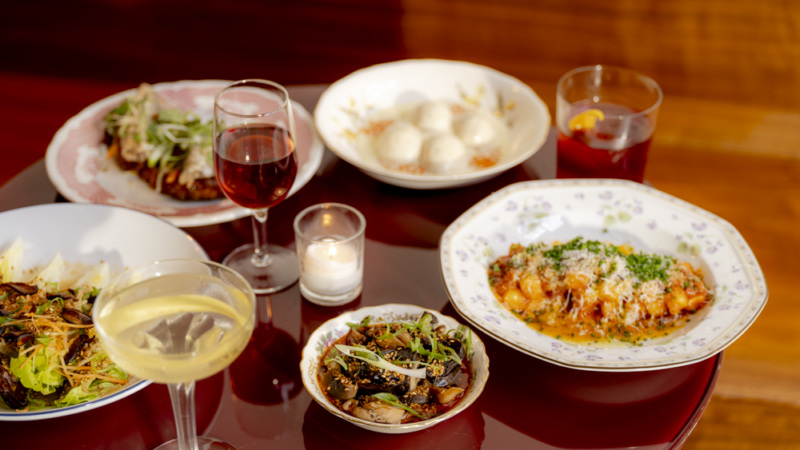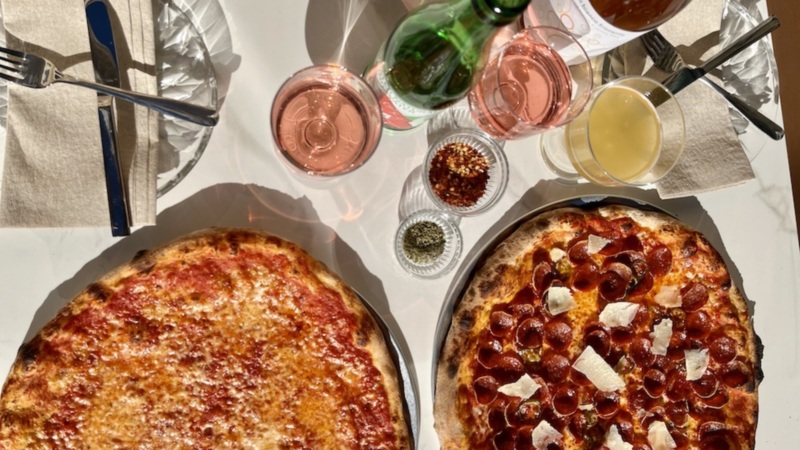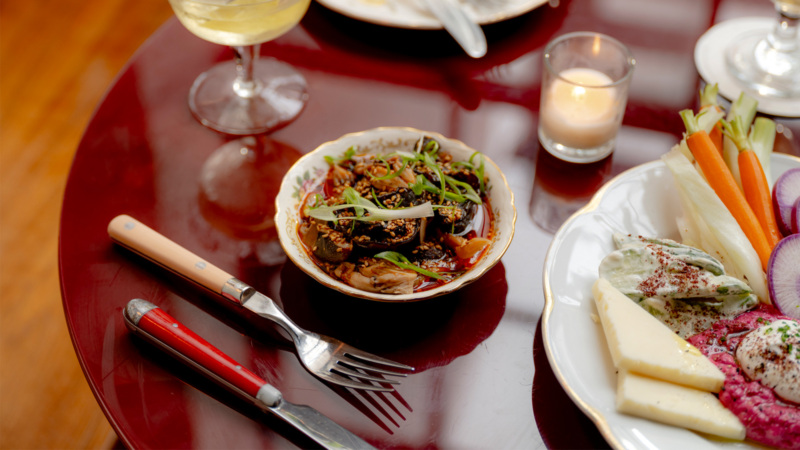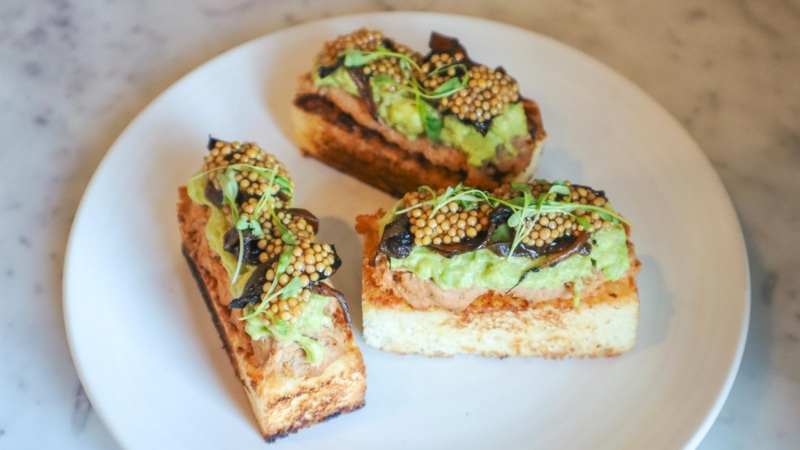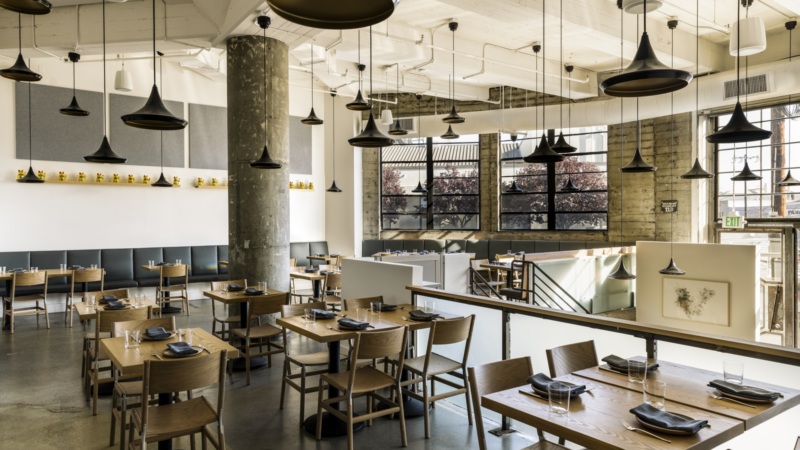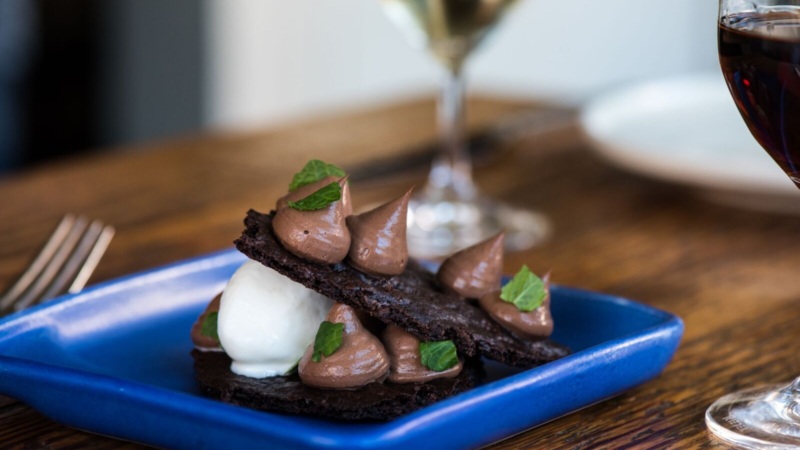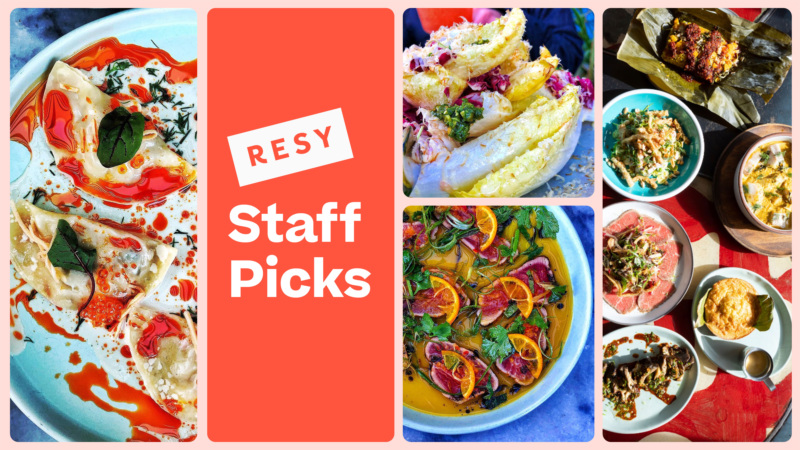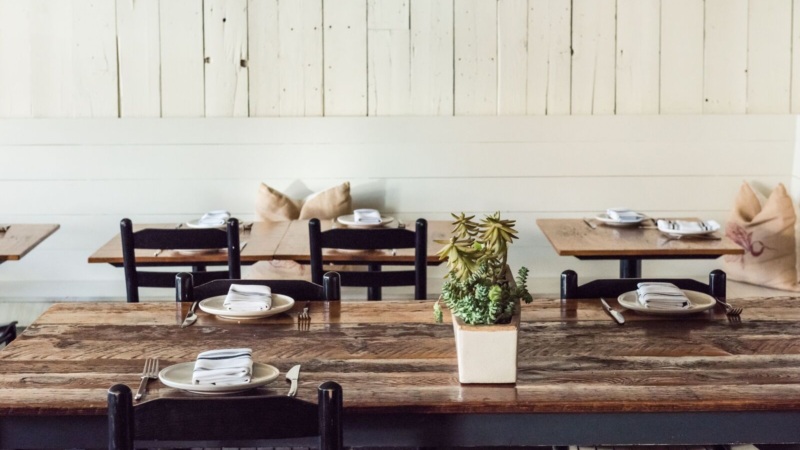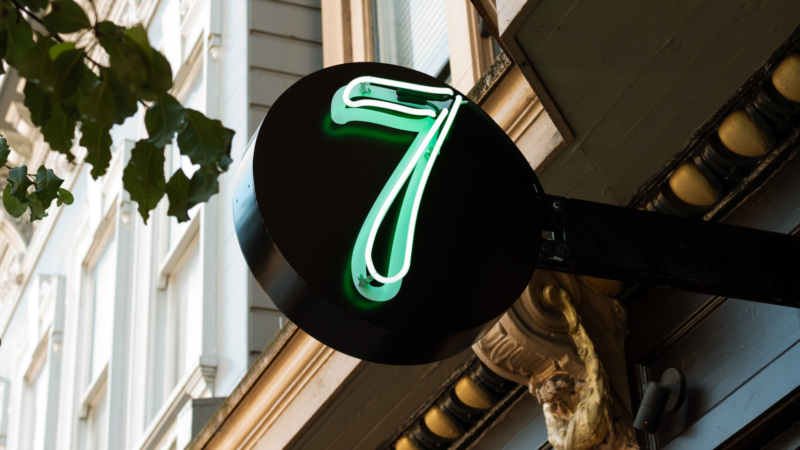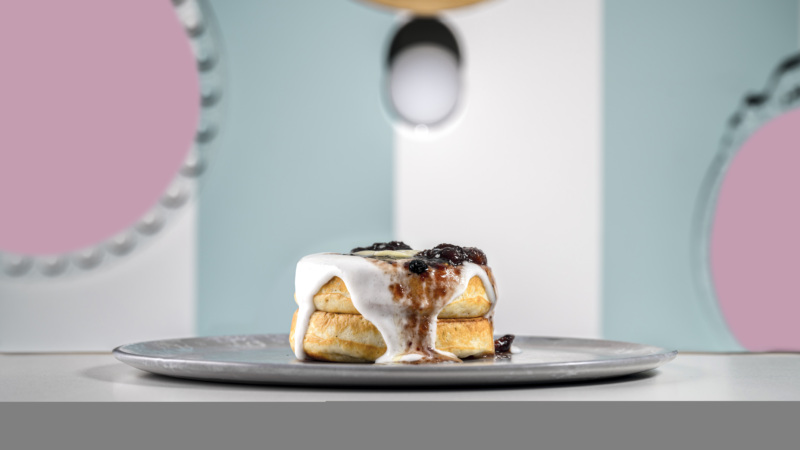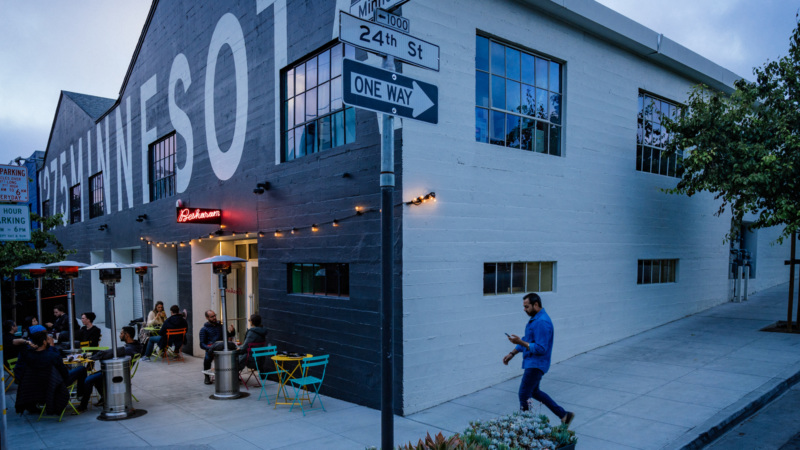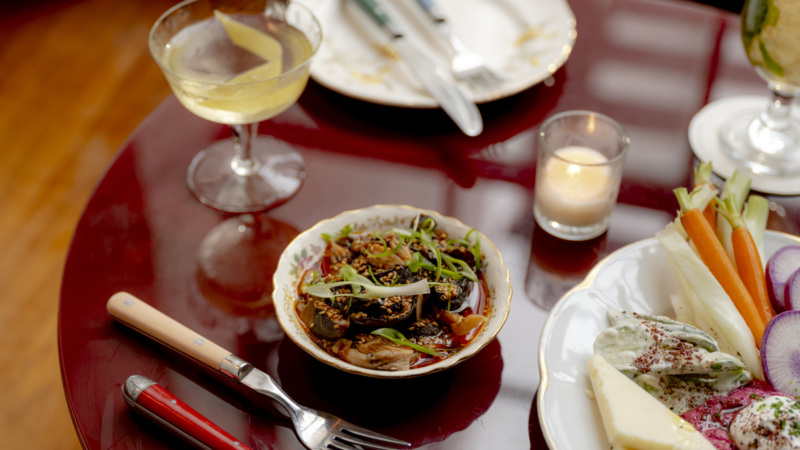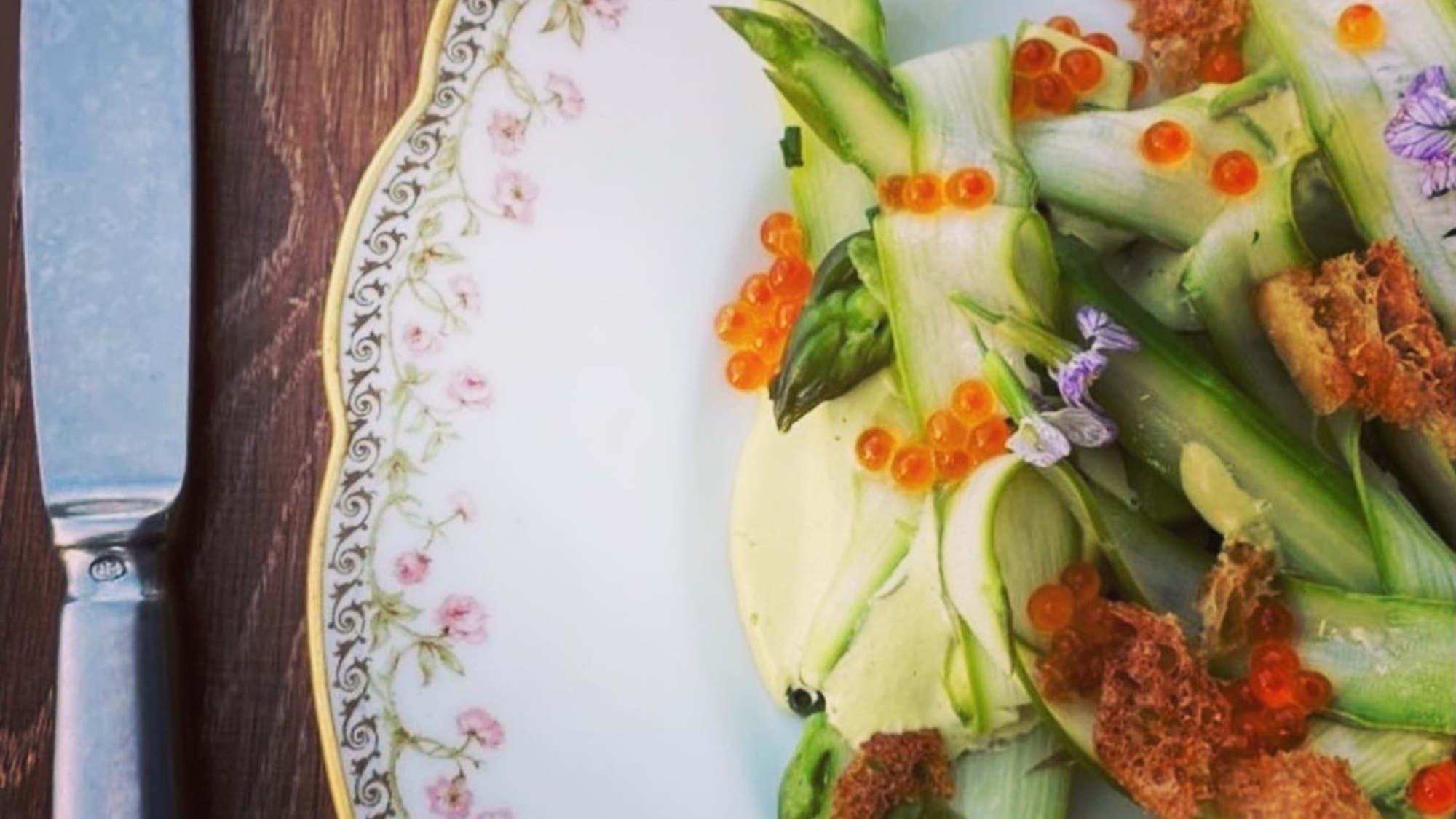
Routier’s John Paul Carmona on Must-Order Dishes, Prices, and Running a Restaurant in 2022
Routier is a French restaurant in San Francisco’s Pacific Heights neighborhood, run by a talented trio of award-winning culinary professions: John Paul Carmona, Belinda Leong, and Michel Suas. Though the three have a strong background in fine dining, working at multi-Michelin starred restaurants around the world, Routier is a bit more accessible.
“Belinda and I always liked more casual food, things easy to understand and enjoy,” says Carmona, who runs the day-to-day kitchen. On the menu, you’ll find all sorts well-executed items with a seasonal San Francisco flair, like duck leg confit with lentils and strawberry, or crispy layered potato pave topped with mounds of fresh Dungeness crab. We sat down with Carmona to learn more about the restaurant, his favorite dishes right now, and much more.
You just celebrated two years of Routier. Congratulations. How’s the restaurant been going?
JPC: It’s still evolving. The first eight months were to-go only, and we officially opened indoors in April 2021. So the business, and the indoor dining experience as a real restaurant, feels much younger. It definitely feels like we’re still learning and evolving into what we want the restaurant to be at. I’m happy with the direction we’re going in.
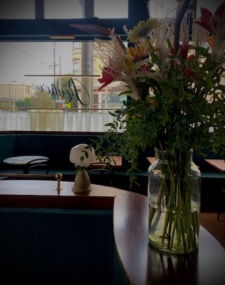
What’s missing?
It’s more of a comfort level with ourselves and how we present ourselves to customers — what people know about us. Some people may expect it to be a little bit more fine dining, but we always wanted to be more casual, but still be able to have a nicer experience with the items you choose, and not overly fussed. That coupled with really friendly service.
How did you and Belinda meet? How long have you been working together?
2008 or so—she came to eat first at a guest chef dinner at Manresa. After she staged, she worked at Manresa around 2010 or so, and while she was there we became good friends and we’d go out to eat. I was there from 2006 to the middle of 2012. After Manresa, private cheffing, consulting,
And the third partner – Michel Suas, who does the bread program. How does have three partners running a business together compare to one, or even two?
There’s definitely more teamwork. It’s like any other relationship — you have to put time in it. There’s growing time, time to get to know each other better. They’re very supportive. You have to go into something like this with people you respect and would support you, in more ways than just financially. They’re both people you can count one.
Beyond bread, Michel does a lot of office-related, HR stuff. Belinda obviously does dessert. Nowadays we don’t have much time together physically, because we’re in different spaces and times. But trust makes it work. Michel keeps a low profile. He’s very modest, but such a source of knowledge.
Our menu is a little bit large, and it’s a lot of work. But we want people to come here and make their own experience.— John Paul Carmona, Routier
How did the concept of Routier come together? When did it actually begin, when were the seeds planted?
This must have been in 2018, 2019. We – Belinda and Michel — had been friends for a while. They always asked me if I ever wanted to open a restaurant; I was mainly doing private chef things at the time. We didn’t really think about it — we spent a month in Korea opening b. patisserie. And from there I got to know them better and they saw the way I worked, and from there, the Routier space became available and that became the catalyst.
The French thing — we both really enjoyed eating in Paris. We didn’t want something super traditional — and I’ve always cooked the same way, having fun. It became natural.
What exactly is a “routier” restaurant in France?
It’s a restaurant along the road — there is a guide. It’s more for truckers, a rest stop where you eat with good food but a lower price. It’s done well, it’s correct. It’s not going to be anything super wild.
What are some menu items that haven’t left the menu since day one, and never will?
The chocolate mousse for one. That’s the dessert that everyone wants in France. Belinda and I always agreed there’s should be a good classic chocolate mousse.
The chicken liver mousse has been on since day one. The crab pave is a mainstay; it wasn’t there in the very beginning but got on early.
The rest of the menu — I want it to at least evolve or change. Some dishes started as easy to go, but once you sit down you want it to be a little bit nice.
If you were to go a la carte, what’s the perfect order for two hungry people?
Our menu is a little bit large, and it’s a lot of work. But we want people to come here and make their own experience.
I’d start with chicken liver mousse. Crab pave is a nice way to start. If you’re feeling splurgey, you could go caviar. Then we have a hen of the woods au poivre. I’d do a salad in there; those change pretty often. Right now it’s tomato salad with tonnato sauce. That’s another dish that’s been on the menu since we started — we bring that back every year.
Then I’d probably do a fish. Right now we have nice sea bass with summer truffle with a beurre blanc. I’d also do the duck confit.
And then for dessert — I always prefer the fruit dessert. But those change often. Right now we’re doing a “napoleon” – it’s not the classic. Right now, it’s figs and plums, which obviously reflect the season — that’s definitely my kind of dessert: Fruit, vanilla, buttery pastry.
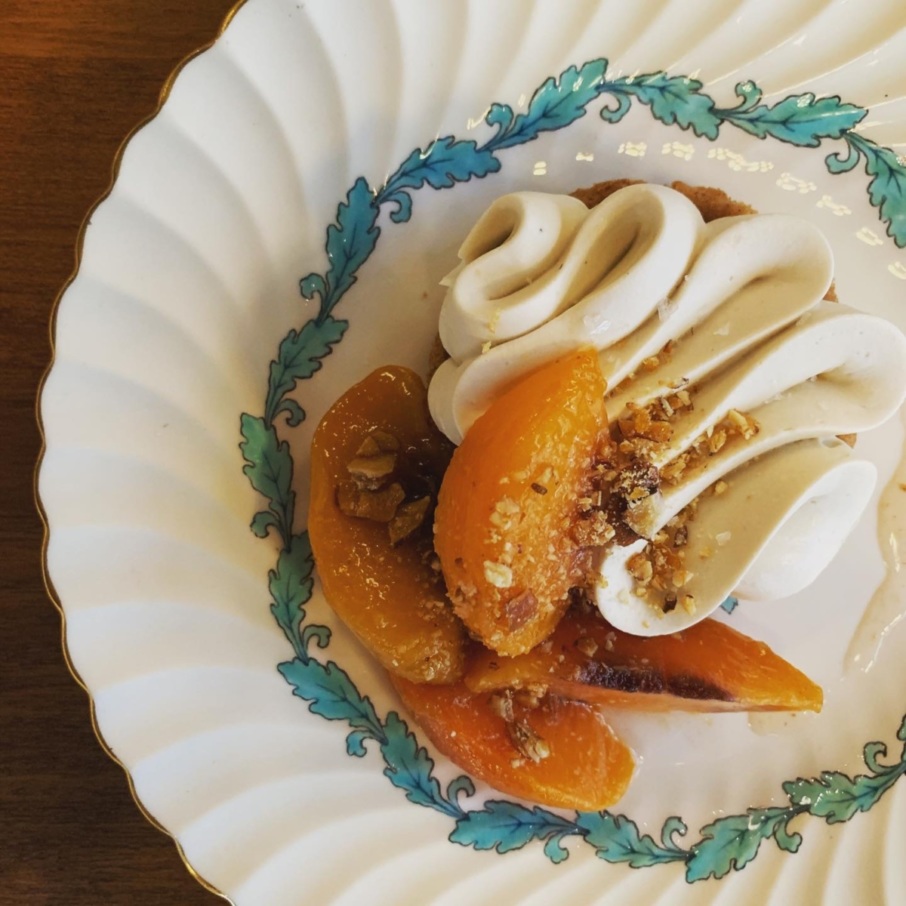
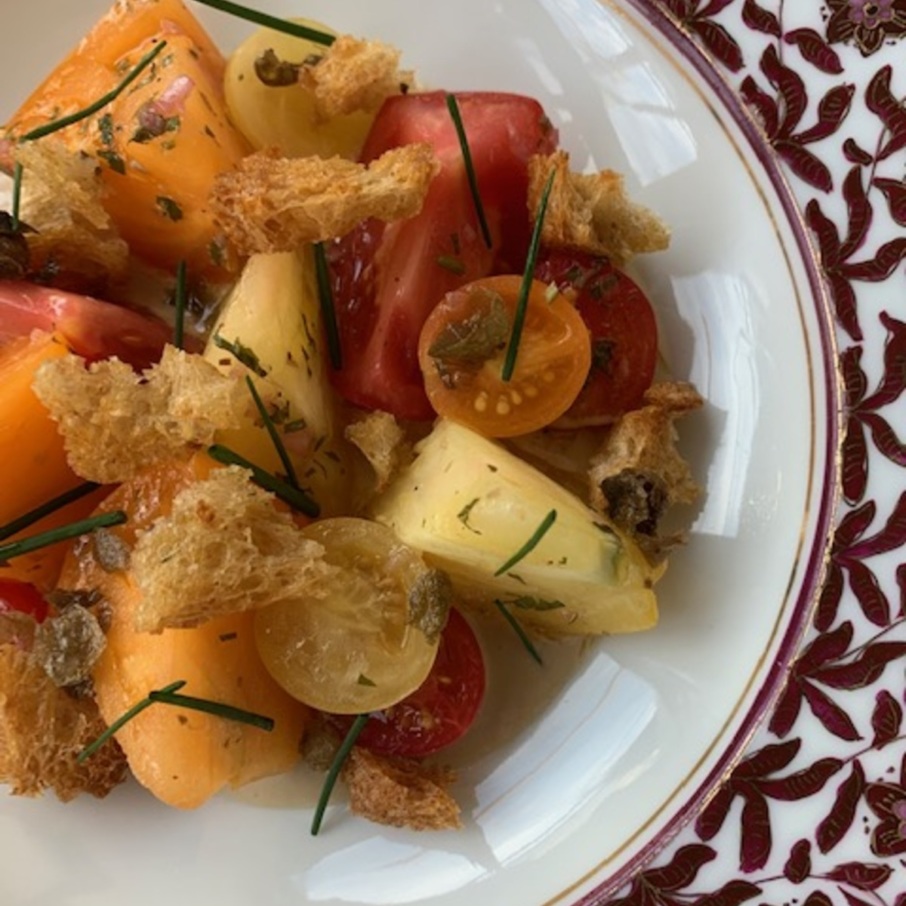
What’s the one dish you’re most proud of, and why?
If you know chefs, we make stuff, then after a while we want to change it or take it off the menu. The chicken liver mousse is something I do enjoy. It’s kinda simple, but kinda different.
The compote is made with fenugreek leaves, which aren’t traditional in western cooking. The flavor is nice, with currants and onions that have been stewed for a long time. Someone recently pointed out that it’s basically liver and onions. You could simplify it back to that old pairing.
What’s your favorite cocktail on the menu, and why?
The Maison Jolie is one we’d had for a while, and I just really enjoy it. It’s got gin, lemon, cardamom, and egg white. I just really love cardamom; it makes it a lot more exciting.
How have you kept the team together?
I would never take that much credit. The biggest part is them — the type of people they are. Personally, I hope they see how much I work, and hopefully they want to keep and support. I’m definitely a leading-by-example type of person.
Right now the prices on everything are pretty insane with inflation and whatnot. How have you managed prices? Did you have to raise menu prices?
That’s a tough one because we’ve always wanted to be affordable and approachable. Obviously prices rise at a rate higher than people’s acceptance. When we started, the formulae was $39, we tried to make it work within the menu. That has gone up to $55.
The rest of the menu hasn’t gone up that much. I try to raise prices slowly. I don’t want it to be a shock to customers. The price of goods has gone up like 15%, but the menu hasn’t gone up the rate at which ingredients have. I try to be smarter about what we’re using, because we want to be fair and not price people out.
What are some things you’d like to see improved in the restaurant industry?
Pay is a tough one. As someone who operates and as someone who does the work. And as someone who has worked long hours in fine dining. The truth is, the money isn’t there. We’re not tech companies.
But also, customers being understanding — and being empathetic — of the person in front of you, the server in front of you. Being empathetic of certain things. Showing up on your reservation time is important.
One thing for me — and I used to do it when I was younger – is people break down every aspect of what you’re eating. The main thing is to enjoy yourselves. A lot of times now, people want to go to a place to rate it or compare it to something else. Sometimes when you get into comparisons, you lose the ability to enjoy something. If you just enjoy, it opens up the possibility to a better experience.
How can people be better diners/customers?
I think the main thing is putting yourself in the side of the business, and in the shoes of the person providing the service to you. If they see themselves doing that, they’d have more respect and more understanding.
Omar Mamoon is a San Francisco-based writer & cookie dough professional. Find him at @ommmar



